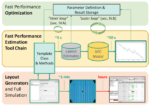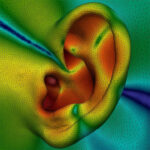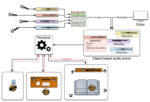Radiofrequency ICs (RFICs) are found in consumer devices, portable electronics, automotive, military, and medical systems. They typically operate from several hundred MHz to multiple GHz. Those high frequencies present designers with significant layout challenges to ensure proper functioning, including the use of transmission line technology for efficient operation. This FAQ presents several options for RFIC […]
If you’re designing mixed-signal ICs, here are some tools to consider
Mixed-signal ICs are increasingly common in automotive, internet of Things (IoT), medical, industrial, consumer, and other applications. Designing mixed-signal ICs is more complex than simply designing an analog section and a digital section. There’s the interactions and interconnections between the sections, and the need to integrate software into the final solution. That makes designing mixed-signal […]
If you’re designing MEMS devices, here are some tools to consider
The uses for microelectromechanical systems (MEMS) devices have grown exponentially. Applications for MEMS technology include actuators, sensors, inertial measurement units (IMUs), energy harvesters, pumps, motors, oscillators, resonators, and more. They are used in all areas, from consumer to medical, military, and space. Two keys to the expansive uses of MEMS devices include the ability to […]
What are the elements of analog IC EDA tools?
Analog functions like sensor interfaces, signal conditioning, power management, and energy harvesting are needed in many applications. These functions are implemented with circuits like operational amplifiers, regulators, filters, sense amplifiers, low-noise amplifiers, phase-locked loops, analog-to-digital converters (ADCs), mixers, analog receiver front ends, and so on. These functions complement digital processing and can be implemented as […]
If you’re designing analog ICs, here are some tools to consider
Designing analog ICs can be a time-consuming and nit-picky process. As with the design of digital ICs, speed, power, and area (SPA) considerations are important. However, in the case of analog ICs, added challenges include gain, bandwidth, signal distortion, noise sensitivity, power supply sensitivity, thermal sensitivity, and more. All the major electronic design automation (EDA) […]
If you’re designing power ICs, here are some tools to consider
Power ICs cover a variety of functions, from high voltage application-specific ICs (HV-ASICs) to power management ICs (PMICs). Each type of power IC has unique design challenges and needs specific design tools. This FAQ reviews some of the challenges related to HV-ASICs for applications like gate drivers for power semiconductor devices, pin drivers for automatic […]
What are the computational requirements of immersive audio?
There are several ways to implement immersive audio, each with different computational and hardware needs. Calculation of the head-related transfer function (HRTF) is an important aspect of deploying immersive audio. This FAQ begins by detailing what an HRTF is, looks at an open-source program for calculating HRTF, and then considers how cameras and inertial measurement […]
What’s the difference between object- and channel-based audio?
Immersive audio uses various channel- and object-based techniques to deliver a high-quality listening experience. There are three general categories of spatial audio: channel-based audio (CBA), object-based audio (OBA), and scene-based audio (SBA) — that’s the next generation of OBA. CBA is the simplest form of spatial audio, but it’s not immersive. The basic form of […]
What codecs are there for immersive and 3D audio?
Immersive audio is a three-dimensional (3D) sound field created by combining lateral and overhead speakers. A variety of industry standard and custom codecs are available for implementing immersive audio. This FAQ reviews the operation of the MPEG-H Audio (universal immersive audio coding) codec and the still-under-development MPEG-I Immersive Audio (compressed representation for virtual and augmented […]
How does artificial intelligence relate to immersive audio?
Tools like neural networks (NNs), machine learning (ML), and artificial intelligence (AI) are being applied to hard problems related to immersive audio. This FAQ will examine how NNs and ML are being used to up-mix audio tracks into their original constituent parts, how NNs are being used to produce personalized head-related transfer functions (HRTFs) and […]










